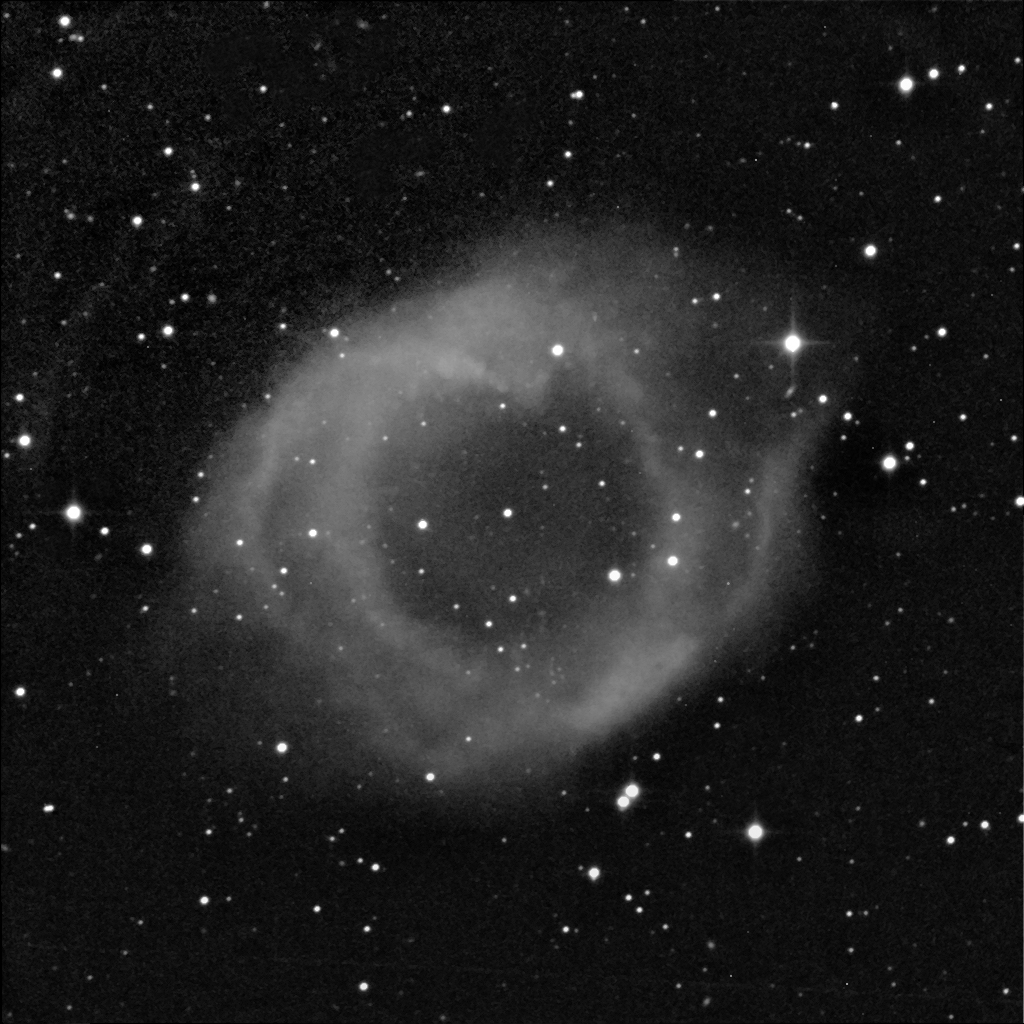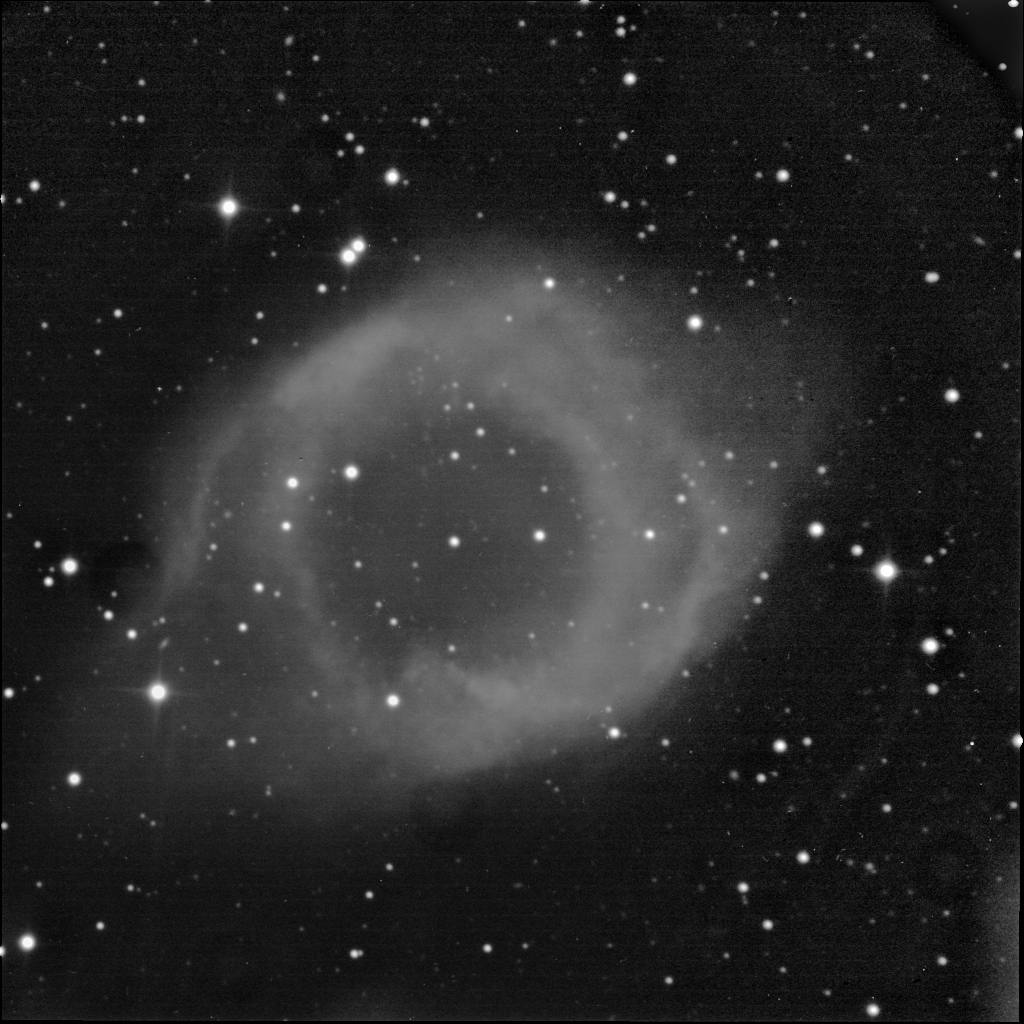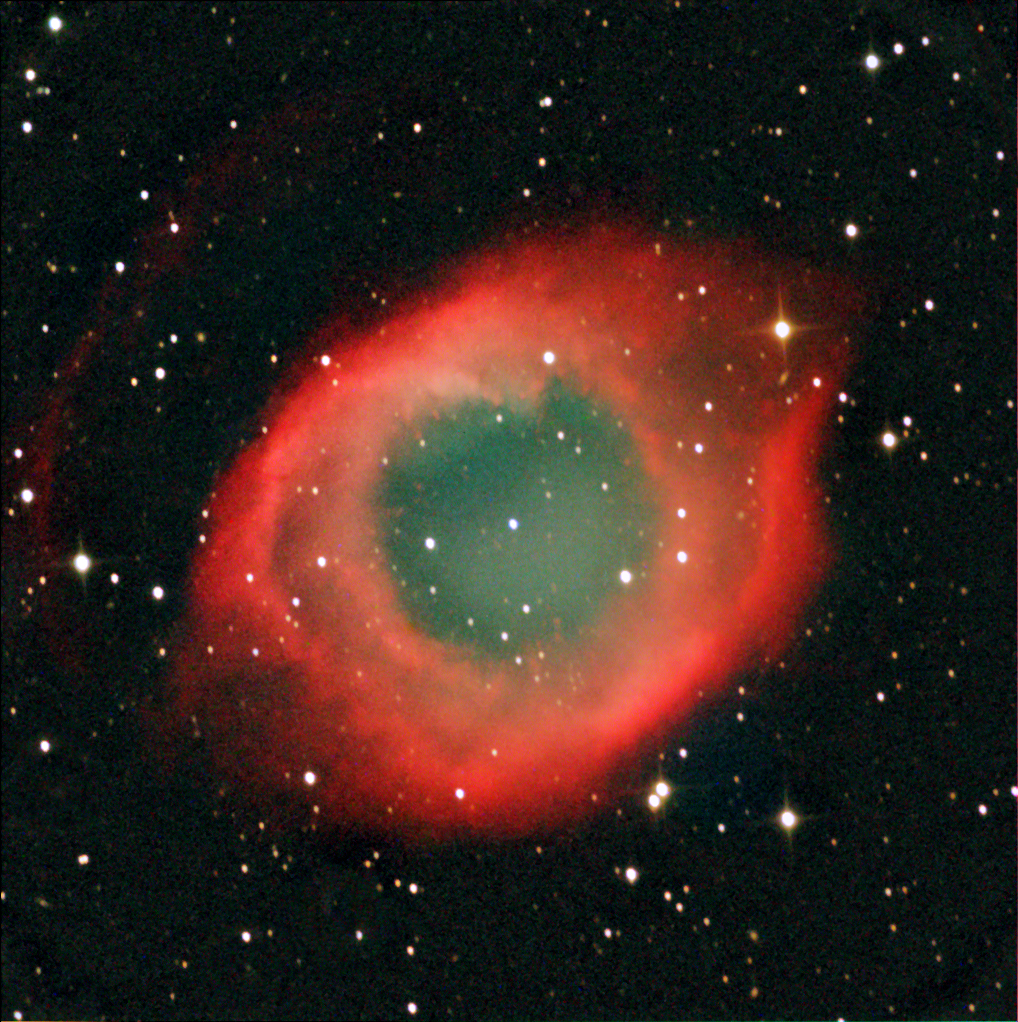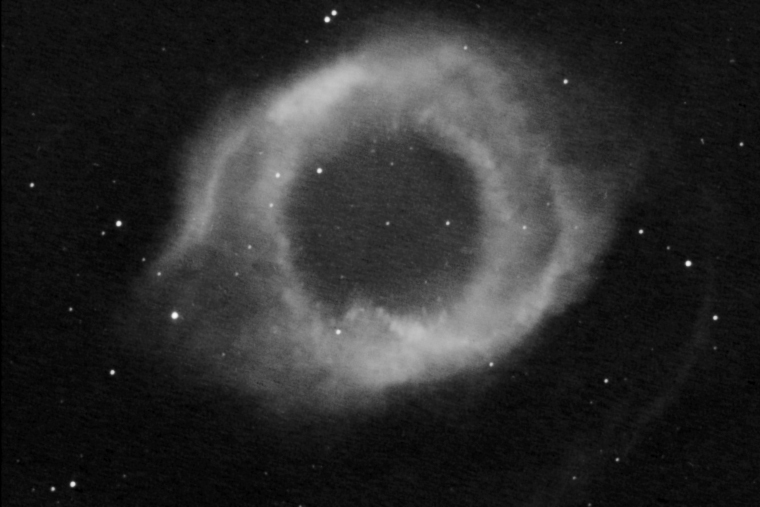
Combination of 10, 3 minute exposures using an H-alpha filter.
SBIG ST-8XE CCD. 300mm f/6 newtonian telescope at prime focus.

One of the largest and brightest planetary nebula, the Helix nebula paradoxically has a reputation for being a very difficult object to observe visually. This is an undeserved reputation. Under a dark sky it is readily visible to the naked eye. For many years, some friends and I would use the naked eye visibility of the Helix as a guide to how dark the skies were, particularly while observing the eta aquarid meteor shower. If the nebula was not visible to the naked eye, then we considered the night poor.
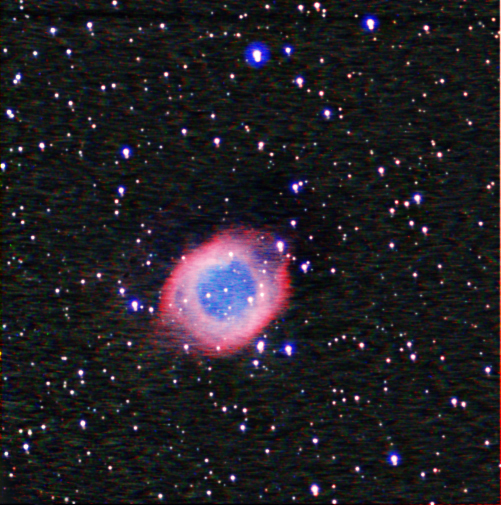
Binoculars will show the nebula as a diffuse patch of light, while in a telescope it is necessary to use low magnification for a good view, due to the large size of the nebula. In a 6" telescope, the nebula appears as a large, diffuse patch with a slightly darker centre. In a 12", it is clearly annular with a number of faint stars imbedded within it.
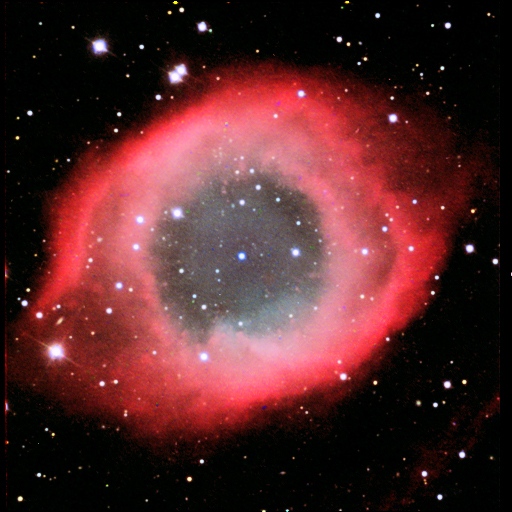
The Helix nebula has long been one of my favourite objects. One of my most vivid memories was with a 17.5" telescope under 6.8 skies. It appeared as a large, ghostly annulus studied with faint stars. The nebula also exhibits a strong responce to an OIII filter.
